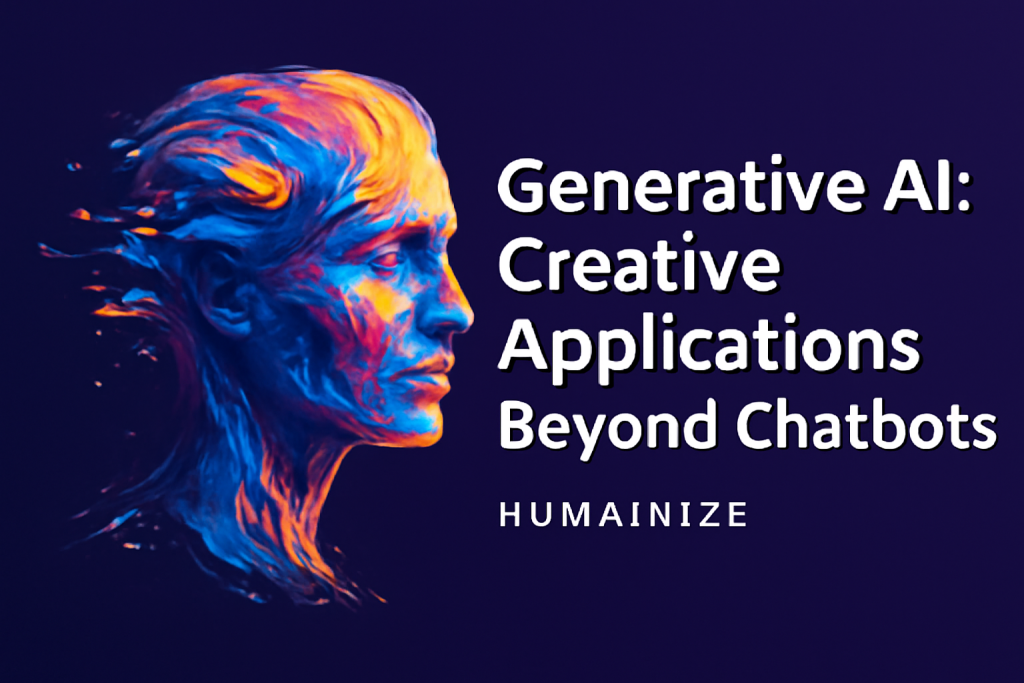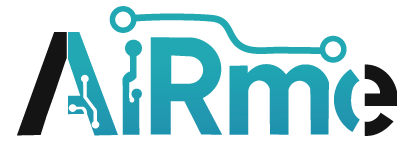
Introduction
Start by defining generative AI in the context of creativity. This part sets the stage by explaining that generative AI isn’t just about mimicking conversations but can create novel and original content that pushes the boundaries of creativity.
What is Generative AI?
Dive into the technology itself. This section provides background on how generative AI works and highlights the difference between generative models and traditional AI. Talk about:
- Deep learning and how neural networks train generative AI models to produce new content.
- Generative Adversarial Networks (GANs), explaining the relationship between the generator and discriminator.
- Transformers and LLMs (like GPT) and how they’ve become a foundation for content creation beyond chatbots.
This section should establish the foundation, so make it rich in technical detail without getting too technical.
Applications of Generative AI Beyond Chatbots
Creative Art
- Discuss AI art and how tools like DALL·E or DeepArt use text-to-image generation. Mention collaborations between AI and artists to create unique pieces that were once thought to be purely human endeavors.
- Include examples, such as AI recreating Van Gogh’s style or generating entirely new forms of art from scratch.
Music Composition
- Dive into the generative AI models like OpenAI’s MuseNet, and how they’re creating original music. Mention the diversity of genres AI can compose, from classical to contemporary electronic music.
- Talk about tools that musicians use for inspiration, such as AIVA or Jukedeck, and how AI helps with composition, sound design, and remixing.
Storytelling and Literature
- Look into how AI is revolutionizing writing. Explain how tools like GPT-3 are assisting authors with creative writing, generating plot ideas, or even writing whole chapters.
- Talk about the creation of poetry using generative models, where AI attempts to write in the style of famous poets or invents its own form.
Fashion and Design
- Explore how AI is being used in the fashion industry. From generating new clothing designs to predicting fashion trends, discuss the influence of AI on the creation of garments.
- Give examples of brands experimenting with AI in design and how these tools help streamline creativity, reducing time while improving innovation.
Video and Animation Creation
- Move into how AI is used for generating realistic animation and video content, including the creation of deepfake technology.
- Discuss AI’s role in video games, both in content generation (landscapes, characters) and in enhancing player experiences through personalized content.
Film Industry
- Touch on AI’s role in screenplay writing, film editing, and even acting. Discuss AI-generated movie trailers and how companies like Soderbergh have experimented with AI-assisted filmmaking.
The Creative Process: How Generative AI Works in Collaboration with Humans
Generative AI isn’t replacing human creativity but enhancing it. In this section, explain:
- AI as a Tool for Creative Professionals: How artists, musicians, and writers use AI to speed up their workflow or break creative blocks. For example, AI-generated music samples that inspire real-life compositions.
- AI as a Co-Creator: Discuss how AI collaborates with human artists, offering a range of creative possibilities that might not be otherwise explored. This section should have personal examples of professionals working with AI tools in tandem with their creativity.
Real-World Case Studies
Use in-depth case studies to bring the technology to life.
- AI in the Fashion Industry: Discuss specific designers or brands that have integrated AI into their design process.
- Example: How Stella McCartney or Tommy Hilfiger used AI to predict trends and improve production.
- AI Music Tools: Examine how musicians like Taryn Southern are collaborating with AI tools to create full albums, and the role AI plays in improvisation and sound synthesis.
- Deepfakes and Ethics in Film: Explore the film industry’s use of AI, including deepfake technology’s implications for acting and storytelling.
- AI in Literature: Mention the novel “1 the Road”, co-authored by AI and a human writer, as an example of AI co-authorship in fiction.
Ethical Implications and Challenges
While generative AI is an exciting tool for creativity, it raises significant ethical concerns. This section will address:
- Copyright and Ownership: Who owns the work created by AI? Is it the developer, the user of the tool, or the AI system itself?
- Deepfakes and Misinformation: Discuss how deepfake technology can be used both for artistic expression and for malicious purposes, such as spreading misinformation or damaging reputations.
- Bias and Fairness: Talk about how AI models can inherit biases from the data they are trained on. This can impact creative outputs, leading to stereotypical or harmful representations.
- Job Displacement: Touch on the concern that AI might replace human workers in creative fields, reducing the demand for human artists, musicians, and designers.
The Future of Generative AI in Creative Industries
Looking ahead, the future of generative AI is bound to grow exponentially. Discuss:
- AI as an Integral Part of the Creative Industry: Predict how AI will evolve from being a tool to becoming an integral part of the creative process, offering limitless creative possibilities.
- AI in the Metaverse: Discuss the upcoming integration of generative AI in creating immersive experiences for the metaverse, where everything from avatars to environments will be generated by AI.
- Human-AI Collaboration in Creativity: Explore the potential of AI to not just assist but also challenge human artists, pushing them to think in new ways and break boundaries.
Conclusion
Summarize the role of generative AI in transforming creative industries. Emphasize that while AI is still developing, it has already made significant strides in various fields. The partnership between humans and AI opens up exciting possibilities in art, music, literature, design, and film.
Encourage readers to explore the tools available and consider how they could incorporate generative AI into their own creative processes, whether as artists, musicians, designers, or marketers.


Leave a Reply